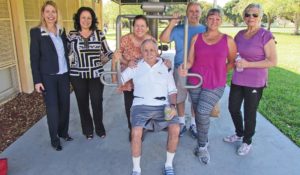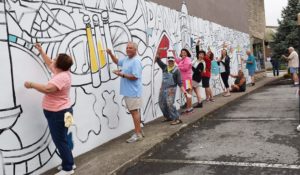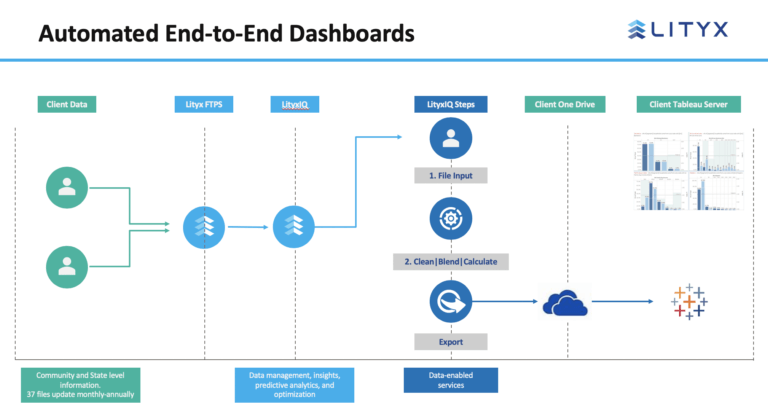Case Study:
Livable Communities
Analytic Process Automation
The Client
 Roughly 90 percent of adults age 65 or older, want to “age in place” in their homes and their communities. They want to remain close to their children and grandkids. Such connections are not just nice to have — they actually contribute to the health and well-being of older adults.
Roughly 90 percent of adults age 65 or older, want to “age in place” in their homes and their communities. They want to remain close to their children and grandkids. Such connections are not just nice to have — they actually contribute to the health and well-being of older adults.
AARP Livable Communities supports the efforts of neighborhoods, towns, cities and rural areas to be great places for people of all ages. They believe that communities should provide safe, walkable streets; age-friendly housing and transportation options; access to needed services; and opportunities for residents of all ages to participate in community life.
AARP works to build awareness of and support for community-led efforts in the following ways:

Help communities examine their housing, transportation, and access needs through an age-friendly lens.
Work to support communities in diversifying their housing stock.
Educate communities and residents on how to determine the livability of their neighborhood.
Invests in communities to strengthen the quality of place and encourage citizen engagement.
The Challenge
An important part of the work that the AARP Livable Communities team performs is its efforts to influence decision-makers to enact policy and fund programs that improve city design.
These decision-makers require sustained, targeted resources and support to accelerate the pace of change towards more livable communities. The levers of municipal influence are complicated and require a detailed understanding of local circumstances.
The AARP team had access to a lot of valuable and greatly needed information, but it was not centralized, easily found nor consistent. A data-driven approach was required to allow them to make stronger and more targeted cases when influencing and enrolling decision-makers in community decisions that support age-friendly decisions.
Before starting work with Lityx, the team had disparate data, in a variety of locations, some of the data unknown to members of the team. Additionally, duplicate efforts were being performed in each state and there was a lack of process in approach.
Additionally, in 2018 every state office prioritized the Livable Communities program and the enrollments in NAFSC increased rapidly. AARP had to figure out how to improve their data systems and processes to accommodate the demand and scale the program quickly.
“Before starting work with Lityx, the team had disparate data, in a variety of locations, some of the data unknown to members of the team. Additionally, duplicate efforts were being performed in each state and there was a lack of process in approach.”

The Solution
Leveraging the LityxIQ platform, the Lityx team was able to bring together all of the data from the different sources. Automated processes for data collection, warehousing, cleaning, and preparation were established.
This enabled uniformity of approach across states and empowered the teams in those states with a visual method to see and share the data in the form of dashboards that can be shared with the team, stakeholders, and community influencers.
The Outcome
With the data organized and dashboards built to provide a better understanding of the work performed across states, the AARP Livable Communities team has experienced a variety of improvements in their processes and the work they are doing.
Get Started
with Lityx
